“Get goats” they said “It will be fun” they said.
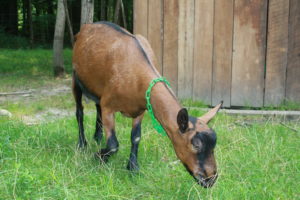
Mabel – a 2 year old registered Oberhasli
Want to make great goat milk products? Soap, lotion, candles, fudge, cheese, or just want the milk? While they are a lot of fun they are also a ton of work and money. When it comes to raising dairy goats there are a lot of hidden expenses that no one really seems to tell you about. So, before you jump into dairy goats you should know the true cost of having them. Being blindsided is never a good thing, especially when it comes to money.
The Initial Cost of a goat
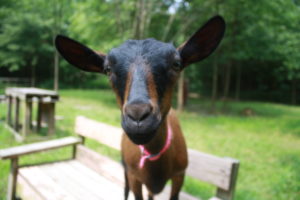
Izzabella This years registered Oberhasli doeling
The initial cost of the goats ranges from a few dollars to hundreds of dollars. Why the big difference? Well it all starts with gender male or female? If male, buck or wether (a castrated male)? Horns or no horns? Age, breed, registered, health, and place of purchase all decide the cost. Highly sought-after registered young females are going to be most expensive, typically speaking. Older unregistered male goats often are given away or sold very cheap. A quality registered goat coming from a reputable breeder will bring more money than one purchased from the sale barn. Health guarantees are a huge plus, especially if you plan to milk or breed in the future. Cae, CL, and Johne’s testing should be amongst the most important choice a goat owner makes. Why? These diseases can spread through a herd and either make them all ill, pass on to the next generations, or wipe out a herd completely.
Milking Equipment
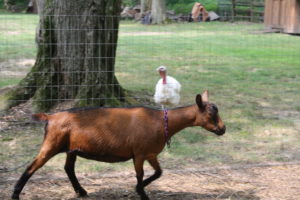
Ginger 4yr old registered Oberhasli doe
For this article, we are going purchase a two-year-old, registered, dehorned, and disease tested doe in milk. Typical price range $250-$500. Now you need a milk stand $100-$500 dollars depending upon material and craftsmanship. If you are handy you can get away cheaper. So, you are going to hand milk, you will need a pail, strip cup, teat wipes, mastitis spray, filters, and a funnel; there goes $150. Want a machine? Bring out the credit card because it is going to cost you $500-$1500.
Veterinary Care
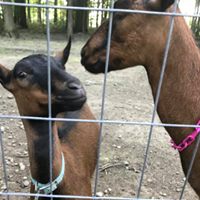
This year’s registered Oberhasli doeling… Izzabella’s half-sister.
Now, are you going to take care of their hooves? You will need trimmers costing about $30. If not, it is going to cost you roughly $25 per goat every few months. What about vet care? Are you going to give them all their shots and check fecal samples for worms? A Vet will charge per fecal sample costing about $25 + vet fee + wormer medicine = $50-$100 per goat at-least twice a year. This is just for routine medical care. If you have a sick goat then it is a whole different very expensive story.
Breeding Choices
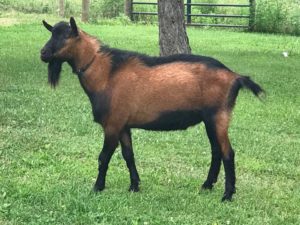
Ferg 2 yr old registered Oberhasli buck
Want milk? Then you are going to have to breed your girls. There are a few choices here; rent a buck, buy a buck, AI (artificial insemination), or driveway breeding. To be honest no matter what choice it can be expensive. Renting will typically cost a per doe charge $50-$100 + boarding + feed. Purchasing a buck will cost the price of the buck + housing + extra fencing + feed. AI has a per straw fee of $25-$100’s of dollars per doe, depending on the quality of the buck + shipping + straw container + AI specialist. Driveway breeding is when does are taken to the buck for $50-$100 per doe while in heat. You let them visit for a few minutes then head back home hoping it took.
Feed
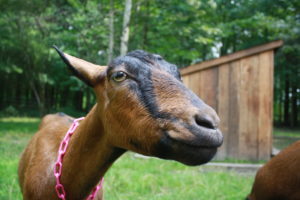
Gizmo 4yr old registered Oberhasli doe…Izzabella’s Momma.
So, are you worried about the cost yet? Let us talk feed. Grain prices vary but we pay around $12 per 50lb bag. Hay depends on quality, location, and cut; a high-quality alfalfa mixes $5-$10 per bale. Against popular belief goats are picky eaters enjoying quality hay, fresh vegetables, foraging, and good grain. Loose mineral, baking soda, selenium paste, vitamin B paste, treats, and other supplements will be needed from time to time. $20-$50 every few months would be an educated guess.
There’s More?

J.J 1yr old registered Oberhasli doe
Now that we have all the numbers lets add them up. Wow! $630-$2730 for your first goat and milking setup. I did not include food, unexpected Vet cost, supplements, fencing, feeders, waterers, bedding, or housing. The first year always seems the worst. Once you have the right setup and all the equipment the price per year goes down drastically. Do you still want to get into dairy goats? I hope so! But go in knowing the true expenses you will incur.
You can follow me on Facebook, Instagram, Website, and Twitter.











4 Comments
Link exchange is nothing else but it is just placing
the other person’s weblog link on your page at suitable place and other person will also do similar in support
of you.
the cost can vary WIDELY from place to place and how much effort you are willing to put in and how much land you have. I have to buy very little hay, and only in the winter, because I do not overload my land with goats and I seek free produce discarded by farm stands and grocers. Also, there are ways to make sure everything is sanitary without buying special teat wipes and strip cups. Making a milk stand is about a one hour job once you have the proper size boards. The return you can get from the wonderful fresh milk, homemade yogurt and cheese and soap (all of which are pretty easy and do not require any special equipment other than the ports and pans you already have and maybe some cheese cloth) and selling the offspring more than pay for the costs. The real message should be that you need to get quality goats and be involved with them on a daily basis to make sure they stay healthy. Most dairy goats, by the way, will stay very healthy with just a little watchful care and knowledge of their nutrition and your local soil and forage conditions. Additionally, goats are very smart and entertaining animals and will develop a relationship to you similar to a dog if you are kind and constant in your care. Of all the livestock that can be kept, goats are some of the most economical and rewarding.
Wow. We started a goat herd much cheaper than that! We found a reputable goat farmer with healthy unregistered goats, took a “risk”, had them tested and they were fine. We made sure our hay source was high in copper (farmer’s soil test proves this) to eliminate a high parasite load and have “doctored” with herbs. Look around, there are other ways to raise goats more naturally. Check out Molly’s Herbals and Waltz’s Ark. Another thing to consider, goats do not need grain until the last few weeks of their pregnancy and while lactating. We found that by emphasizing natural goat care, including not intervening during labor and delivery (we’ve never had an issue…granted we only have been raising goats for four years), the goats easily covered their cost within the first two years. If you choose to buy registered goats (we didn’t), although your initial investment will be higher, so should the final price tag when you later sell offspring.
I have to say, your writing style felt like a lecture, a pessimistic one. First, goats are by nature extremely hardy animals, unless you are keeping in-bred, over-priced, pedigreed “show” animals. Goats are the preferred meat/dairy animal for many a poor country, and for good reason. Provide them ample pasture to forage and they will feed themselves, breed themselves, and de-worm themselves. Goats have a reputation to “eating anything”, because they are so good at finding wild herbs and shrubs that provide what grass pasture never can, including internal parasite control. Unless you are planning on raising goats as part of an FDA/USDA certified business, them raising them the way it was done 100yrs ago, and the way it is still done in poor countries around the world, is perfectly fine. As long as you have the land, the only real expenses Goats incur is initial livestock cost, quality shelter and water access, and your own personal investment of time. everything else can be provided by Mother Nature. Anything else is a modern luxury, for your convenience.